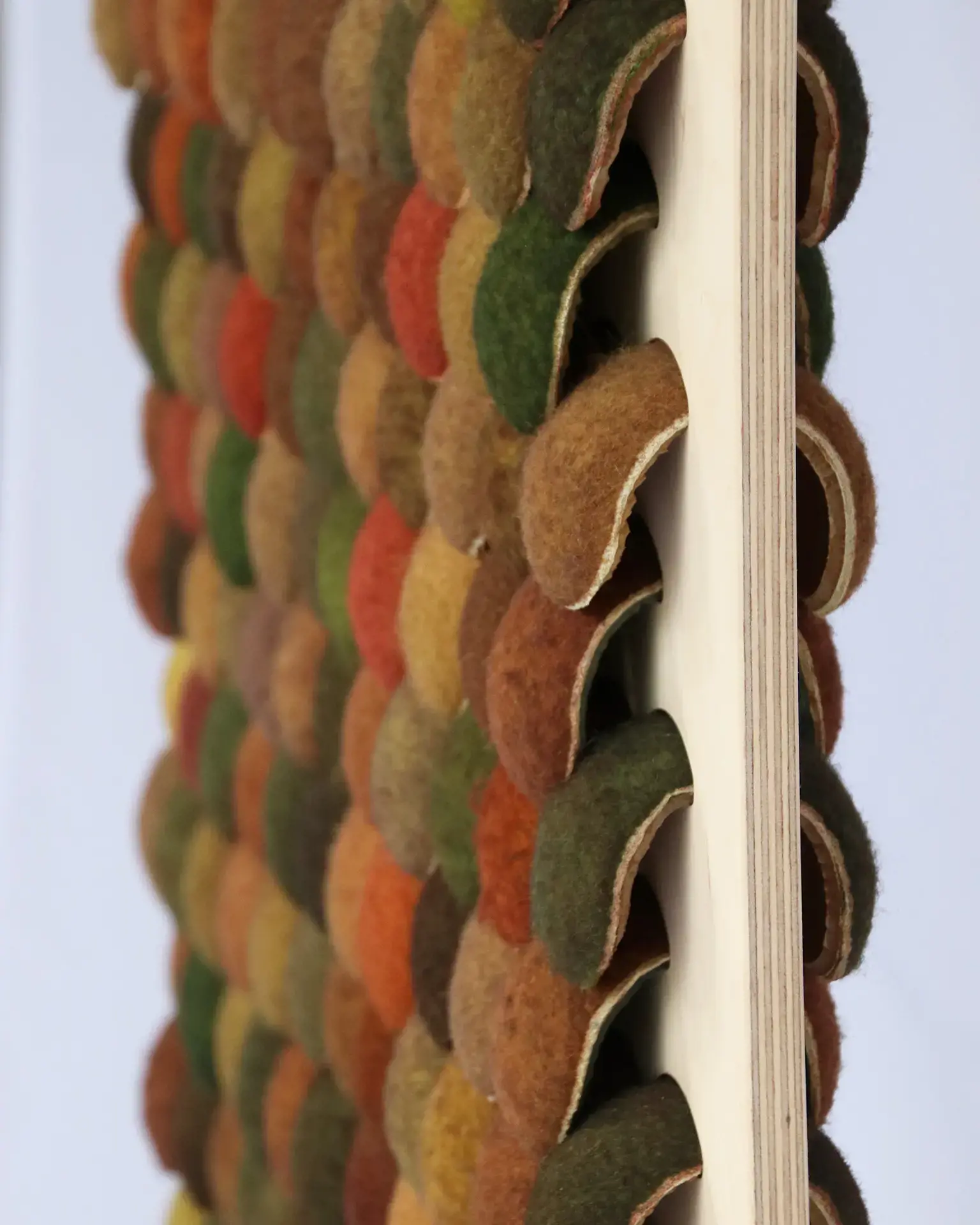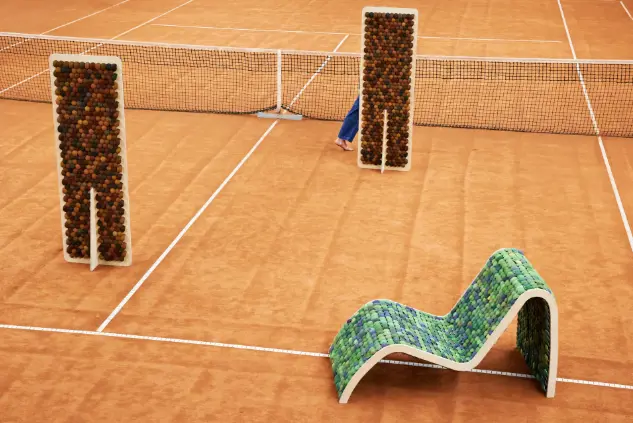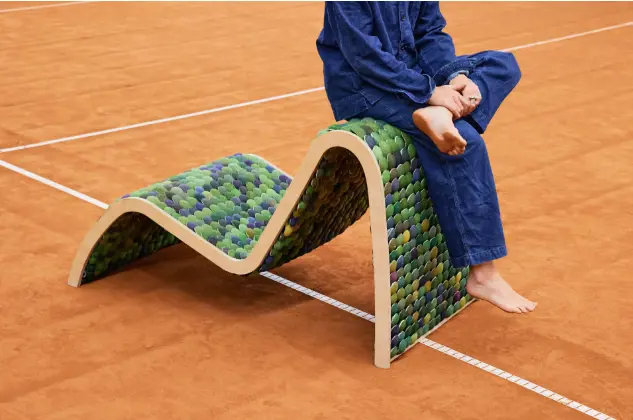Belgian eco-designer Mathilde Wittock transforms discarded tennis balls into elegant benches and chairs, giving the short-lived sports equipment a new purpose and promoting circular design in interior spaces.
Tennis Balls as High-End Design Pieces
Tennis has taken over more than just our wardrobes and screens in recent years — think of Zendaya as Tashi Duncan in Challengers. Now, tennis is entering our living rooms too. Belgian eco-designer Mathilde Wittock creates custom-made furniture from discarded tennis balls.
 Turning Waste into Designer Furniture
Turning Waste into Designer Furniture
Wittock’s sleek, minimalist chaise longues are made entirely without cushions, using about 500 precisely arranged tennis balls. Her metre-long benches use around 270 balls, creating a simple yet sturdy design.
“There are about 24 production steps for a tennis ball, taking around five days. Then it has such a short lifespan,” Wittock told CNN. As a tennis player herself, she saw how much waste the sport creates.
Globally, around 300 million tennis balls are produced annually, almost all ending up in landfills, taking over 400 years to decompose. The US Open uses around 70,000 balls each year, while Wimbledon follows closely with 55,000. Wittock estimates that a ball’s lifespan is about nine matches, depending on the level of play. “Even if they’re still in the can, the gas will eventually escape once opened,” she explained. “Eventually, they go flat and are thrown away.”
Handcrafted Sustainable Creations
It takes Wittock three to four weeks to build one chair, priced at around $2,900. Each ball is hand-cut and dyed, with colours specifically chosen to fit the client’s interior. Through trial and error, she found ways to utilise the shape of the ball while concealing its most recognisable features.
“I had to find an assembly that changes the iconic look of tennis balls,” she said. “They’re yellow with white lines. How do I change that relationship?”
Wittock began exploring these design possibilities while studying at Central Saint Martins in London. “I was really interested in eco-design and material origins,” she said. “It’s always so complicated to trace materials. You never know where they come from or how they’re processed. That really frustrated me.”
Recycling and Circular Challenges Ahead
Today, she sources all materials from tennis club donations. Collections started small — sometimes just ten discarded balls at a time — but grew rapidly. Wittock now collaborates with the Wallonia-Brussels Federation, which offered her their entire stock of around 100,000 balls.
How long will that last? “A few months,” she said. “If it gets busy, maybe nine months. I cut tennis balls at a certain rhythm, about 1,800 per week.”
But creation isn’t her only goal. Equally important is how her pieces are disposed of. “I’m an eco-designer,” she said. “Eco-design is about circularity. You can use great low-carbon or recycled materials, but if the end cycle isn’t closed and components can’t be reused, it’s not eco-design. It’s even worse because it’s new materials.”
At the end of a product’s life, Wittock can dismantle her furniture — built without glue — and recycle the balls: the felt is incinerated, and the rubber shredded to make springy playground surfaces.
Looking to the Future
Her next challenge is accessing the tens of thousands of tennis clubs in North America. “I have so many people interested in the US,” she said. “I’m really thinking about going there and starting recycling.”
So next time you watch a tournament, don’t feel sad for those abandoned tennis balls — their life cycle might just be beginning.

The Soundbounce furniture collection currently includes a chair, room dividers, and a bench, as well as a range of wall panels.
All photographs by Mathilde Wittock.











